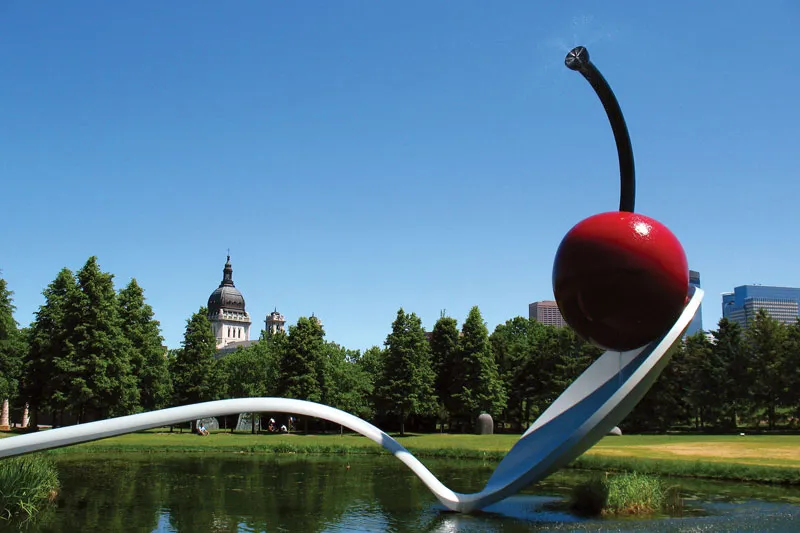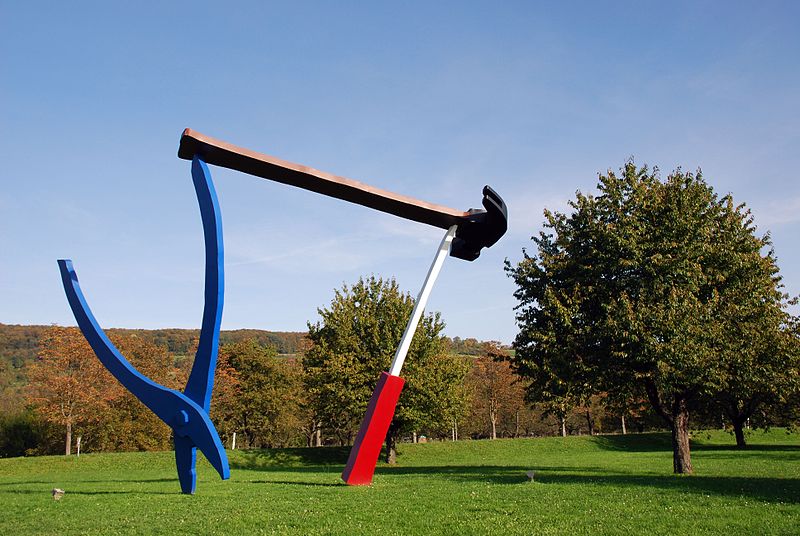Sybaris Collection © | Claes Oldenburg: Colossal Monuments

The Swedish born artist, Claes Oldenburg (1927- 2022), started as a painter and functionality artist right before he phathomed with components and sorts that took him to sculpture. As a issue of simple fact, his early concepts on monumental sculpture had been to start with conceived as a sequence of drawings andwatercolours that he identified as Colossal Monuments.
Inspite of Oldenburg´s Artwork remaining categorized as Pop art a detour defined his have personal design and style: reproduction was changed by monumental.
1. Claes Oldenburg is finest recognised for his substantial-scale public sculptures, but you possibly did not know he began as a painter and functionality artist. In truth, some art historians and critics has named it as a “Sculptor who moves between overall performance and graphic art”

Claes Oldenburg with Huge Toothpaste Tube (1964), 1970.
Foto: Keystone/Hulton Archive/Getty Photos
2. Oldenburg treats his work as a totality in which key themes and motifs interweave in a selection of media. He has manufactured a radical contribution to the record of sculpture by rethinking its elements, types, and subject matter make any difference.
2.1. Both equally his performances and paintings are carefully relevant with his perform in sculptures as we are about to see.
3. When he moved to New York in 1956, he became fascinated with the road lifestyle: retail outlet windows, neon lights, grafitti, and even trash. It was the sculptural choices of these objects that led to a shift in curiosity from portray to sculpture.
4. Essentially, his early ideas on monumental sculpture have been very first conceived as a collection of drawings and watercolours that he called Colossal Monuments, and several of them remained unbuilt.
5. Close to the 60s, he made The Retail store, a assortment of painted plaster copies of meals, garments, jewellery, and other objects, with which he commenced exploring supplies, scale, kinds, etcetera.
6. At the same time, he started creating a collection of happenings for which he made big objects created of fabric stuffed with paper or rags. Later on, he combined his perform with The Retail outlet and his happenings, and exhibited big canvas-protected, foam-rubber sculptures of an ice-cream cone, a hamburger and a slice of cake.
7. That is how he started with his quite well known comfortable sculptures: by translating the medium of sculpture from tough to soft, Oldenburg collapsed stable surfaces into limp, deflated objects that were topic to gravity and prospect.
8. Oldenburg was far more intrigued in banal goods of customer and day to day existence, in aspect affected by the statements of happening and his life in NY, which led him to be considered as an iconic artist of the Pop-artwork movement.
9. Given that the 80s, Oldenburg commenced functioning on commissions for general public areas or institutions. Some of his most popular sculptures were made all over this time, this sort of as Spoonbridge and Cherry, Dropped Cone, Mistos (Match Deal with) and Shuttlecocks, between other folks. All of these sculptures have been created in collaboration with independent critic and curator Coosje van Bruggen

Spoonbridge and Cherry, sculpture by Claes Oldenburg and Coosje van Bruggen, 1985–88 in the Minneapolis Sculpture Garden of the Walker Artwork Middle, Minneapolis, Minnesota.
Foto: © Michael Rubin/Shutterstock.com
10. His perform normally disrupts the performance of prevalent objects—challenging our perceptions and unsettling our routines.Mentioned for their exaggerated scale, daring colors, and daring playfulness, Oldenburg’s sculptures stand out as a provocative mix of the ubiquitous and the unruly.

Image: Resourceful Commons Attribution-Share Alike 3. Unporte




